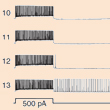Monday, 25 February 2013
Links on Pleasure-Seeking Behaviour
 This week, as I have before in this blog, I am posting a set of new links to other web sites that discuss a subject covered in The Brain from Top to Bottom. The subject this week is the sub-topic “Pleasure-Seeking Behaviour”, under the topic “Pleasure and Pain”. For each link, I also provide a brief description of the content on the site in question. (more…)
This week, as I have before in this blog, I am posting a set of new links to other web sites that discuss a subject covered in The Brain from Top to Bottom. The subject this week is the sub-topic “Pleasure-Seeking Behaviour”, under the topic “Pleasure and Pain”. For each link, I also provide a brief description of the content on the site in question. (more…)
Pleasure and Pain | Comments Closed
Monday, 18 February 2013
4 New RSS Feeds for Recent News About the Brain
 As you may have noticed, last week we added a new feature to The Brain from Top to Bottom Blog to help you follow the latest news in the vast field of neuroscience. I’m talking about the four RSS feeds now appearing in the left-hand column under the heading “RECENT NEWS ABOUT THE BRAIN”. (more…)
As you may have noticed, last week we added a new feature to The Brain from Top to Bottom Blog to help you follow the latest news in the vast field of neuroscience. I’m talking about the four RSS feeds now appearing in the left-hand column under the heading “RECENT NEWS ABOUT THE BRAIN”. (more…)
From the Simple to the Complex | Comments Closed
Monday, 11 February 2013
Neurons with Surprising Properties

Just when scientists thought they had a pretty good understanding of how neurons communicate, along comes a new set of seemingly abnormal data that overturn the official paradigm (such upheavals are not uncommon in the world of science). Any good neuroscience textbook will tell you that neurons are stimulated or inhibited by input signals that they receive through the synapses between their dendrites or cell bodies and other neurons. As a neuron receives all these signals, it integrates them, and then fires one or more action potentials into its axon. These action potentials travel down to the tip of the axon, where they cross synapses to other neurons, and so on.
But as a team of researchers from Northwestern University, in Illinois in the United States, discovered and reported in the February 2011 issue of Nature Neuroscience, the process just described is clearly not the only way that nerve impulses travel through neurons. (more…)
From the Simple to the Complex | Comments Closed
Monday, 4 February 2013
Adelson’s Checkerboard
 Optical illusions are always a humbling experience for people who think that they see the world “the way it really is”. Often, when such people are confronted with optical illusions induced by context, the context has to be removed and then restored several times before these people can be convinced that, for example, two lines that appear to be different lengths are actually the same.
Optical illusions are always a humbling experience for people who think that they see the world “the way it really is”. Often, when such people are confronted with optical illusions induced by context, the context has to be removed and then restored several times before these people can be convinced that, for example, two lines that appear to be different lengths are actually the same.
The world that we see is often ambiguous, and our visual system tries to give it a meaning on the basis of certain recurrent clues. Scientists today are familiar with some of these clues and can combine them to produce some truly astounding optical illusions. One famous example is Adelson’s checkerboard, in which one square is perceived as black and another as white, even though both are actually the same shade of grey! (more…)
The Senses | Comments Closed
Monday, 28 January 2013
Bluffing in Interrogations Leads to False Confessions
 When someone who was suspected of a crime confessed to it, that always used to be regarded as convincing evidence of his or her guilt. But with the advent of molecular biology, traces of DNA have been used to prove the innocence of many suspects, some 25% of whom had previously pleaded guilty or signed confessions after being interrogated.
When someone who was suspected of a crime confessed to it, that always used to be regarded as convincing evidence of his or her guilt. But with the advent of molecular biology, traces of DNA have been used to prove the innocence of many suspects, some 25% of whom had previously pleaded guilty or signed confessions after being interrogated.
How is this possible? The psychologists who study this question distinguish two main categories of factors that can lead suspects to incriminate themselves in this way. The first category consists of personal vulnerabilities, such as being young, or intellectually impaired, or having a compliant personality. The second consists of pressures inherent in the conditions of custody and interrogation, such as having an insufficient knowledge of the law, or being afraid of being assaulted, or threatened with a severe sentence, or subjected to torture that causes pain. (more…)
The Emergence of Consciousness | Comments Closed







